标签:
好几天没把笔记整理上来了,一个是这几天在忙着一些投标以及项目论文的事情,哈哈,还有么 就是画图也是比较耗费我时间的,如果有好的画图建议或者工具,麻烦推荐一下,谢谢。废话不多说,直接进入今天的两个主题:二叉搜索树,平衡二叉树。
1.二叉搜索树(BST)
二叉搜索树的定义很简单:是二叉树,且满足两个条件:如果有左孩子,则左孩子的关键字一定不大于父节点的关键字,如果有右孩子,则右孩子的关键字不小于父节点的关键字。同时,左右子树都是二叉搜索树。
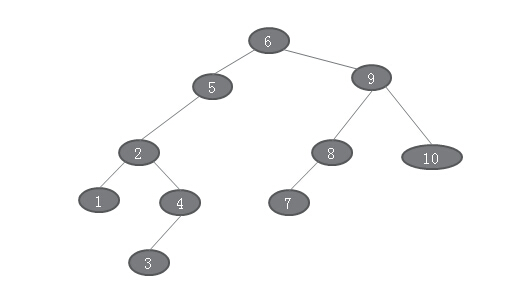
BST_1
中序遍历得到的结果是:1、2、3、4、5、6、7、8、9、10
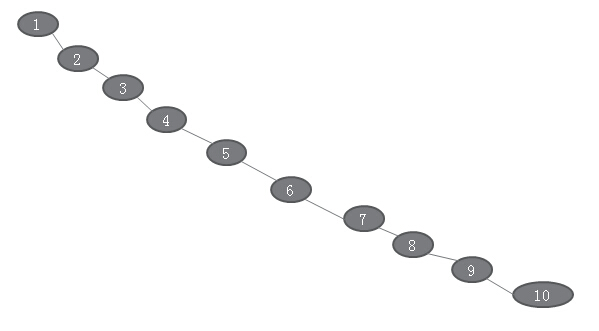
BST_2
中序遍历得到的结果是:1、2、3、4、5、6、7、8、9、10
现在有一个场景,加入我要在这颗树中查找一个关键字11,如果没有的话,则加入到这颗树中,查询步骤是:
1.针对BST_1,根节点是6,因为11大于6,则查找根节点的右孩子(因为二叉搜索树的右孩子的关键字不小于父节点);
2.右孩子的值是9,小于11,继续查他的右孩子;
3.右孩子的值是10,小于11,继续查他的右孩子;
4.因为没有右孩子了,所以,需要将其添加为右孩子。
针对BST_2,我们只需要一直找右孩子就可以了。我们再看一个二叉搜索树:
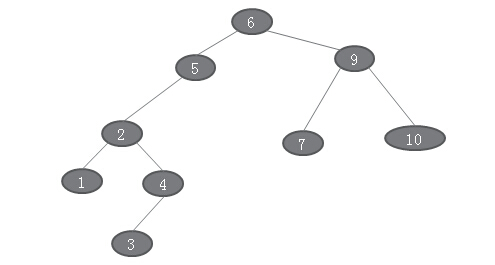
BST3
中序遍历得到的结果是:1、2、3、4、5、6、7、9、10
现在我要查找一个节点,其中的关键字是8的一个节点,如果不在这颗树中,则把它加到树中作为一个节点:
1.根节点是6,小于8,找右孩子;
2.右孩子的值是9大于8,找他的左孩子;
3.左孩子的值7小于8,找他的右孩子;
4.因为没有右孩子了,所以,将其添加为7的右孩子。
从上面几个过程中我们发现一个规律:动态查找过程中,我们不需要重构这个结构,只是在叶子节点上进行操作,非常方便。
那如果要删除一个节点呢?
删除节点的时候,有几种情况需要考虑:
1.该节点是叶子节点,因此,不用重构;
2.该节点只有左子树或者右子树,则把左子树或者右子树的根,接到删除节点的父节点上就可以了;
3.如果该节点两者都有呢?
我们一个一个的来看:
1.该节点是叶子节点。
我们要删除BST3中的节点7,则先按照查询步骤找到这个节点,发现他没有左子树,也没有右子树,则直接删除,并把该节点的父节点的左孩子或者右孩子(取决于该节点是左孩子还是右孩子)清空即可。
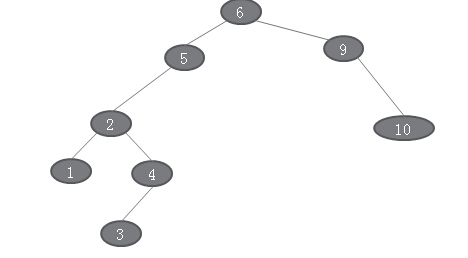
2.该节点只有左子树。
我们要删除BST3中的节点4,则先按照查询步骤找到这个节点,发现他只有左子树,因此,只要删除该节点,并把该节点的左孩子放在改节点的位置即可。

3.该节点只有右子树:
我们要删除BST2中的节点5,则先按照查询步骤找到这个节点,发现他只有由子树,因此,只要删除该节点,并把该节点的右孩子放在该节点的位置即可。
4.该节点有左子树,也有右子树。
我们现在要删除BST1中的根节点,则中序遍历这个节点的左子树,得到的此节点前的那个节点,就是要删除节点的前驱。
比如上述根节点的左子树的中序遍历是:1、2、3、5,则,我是要删除节点6的前驱,将该前驱替代要删除的节点的位置,并设置左指向和右指向即可。
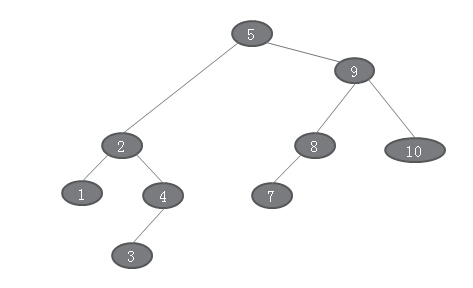
,我们现在再来看一BST。
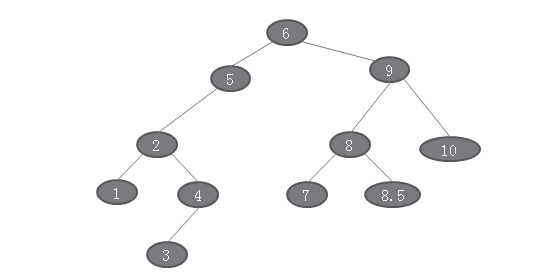
现在我要删除节点9,按照上面的步骤,9有左右孩子,因此,先做9的左子树的中序遍历,找到9的前驱是8.5,然后来替换。最终得到结果是:
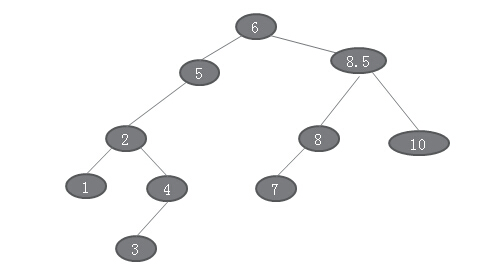
,说了那么多,还是上上代码吧,这次用java代码:
package com.tang.bst;
import java.util.ArrayList;
import java.util.Iterator;
import java.util.List;
public class BST<Key extends Comparable<Key>> {
BSTNode<Key> root;
public BST() {
}
/**
* 插入一个节点
*
* @param data
* 节点的数据
* @return
*/
public boolean insert(Key data) {
if (null == data)
return false;
if (null == this.root) {
this.root = new BSTNode<Key>(data);
this.root.parent = null;
this.root.leftChild = null;
this.root.rightChild = null;
return true;
} else {
return insertBST(this.root, data);
}
}
private boolean insertBST(BSTNode<Key> node, Key data) {
// 左分支,右分支的判断
int lOrR = node.data.compareTo(data);
if (lOrR == 0) {
return false;
} else if (lOrR < 0) {
// 右子树
if (null == node.rightChild) {
BSTNode<Key> rChild = new BSTNode<Key>(data);
rChild.parent = node;
node.rightChild = rChild;
return true;
} else {
return insertBST(node.rightChild, data);
}
} else {
// 左子树
if (null == node.leftChild) {
BSTNode<Key> lChild = new BSTNode<Key>(data);
lChild.parent = node;
node.leftChild = lChild;
return true;
} else {
return insertBST(node.leftChild, data);
}
}
}
/**
* 在这棵树中,指定一个节点,然后开始非递归方式中序遍历以这个节点为根节点的二叉树
*
* @param node
* 指定为根节点的节点
* @return
*/
public List<BSTNode<Key>> noRecurseInOrderTraverse(Key data) {
if (null == this.root)
return null;
BSTNode<Key> beginRoot = null;
if (null == data) {
beginRoot = this.root;// 如果没有指定节点为根节点,那么就从这棵树的根节点开始
} else {
BSTNode<Key> sNode = searchBST(this.root, data);
beginRoot = sNode;
}
List<BSTNode<Key>> stack = new ArrayList<BSTNode<Key>>();
List<BSTNode<Key>> retStack = new ArrayList<BSTNode<Key>>();
if (null != beginRoot) {
stack.add(beginRoot);
}
while (!stack.isEmpty()) {
while (beginRoot != null && null != beginRoot.leftChild) {
beginRoot = beginRoot.leftChild;
stack.add(beginRoot);
}
if (!stack.isEmpty()) {
BSTNode<Key> tmpNode = stack.get(stack.size() - 1);
stack.remove(stack.size() - 1);
retStack.add(tmpNode);
if (tmpNode != null && null != tmpNode.rightChild) {
beginRoot = tmpNode.rightChild;
stack.add(beginRoot);
}
}
}
return retStack;
}
/**
* 查找指定的节点,如果没有,则将他加入到这颗树上
*
* @param data
* @return 0:表示在原树上就有,1:表示添加进去的新节点,-1:表示查询中出错
*/
public boolean search(Key data) {
if (null == data) {
return false;
}
if (null == this.root) {
return false;
}
return searchBST(this.root, data) == null ? false : true;
}
private BSTNode<Key> searchBST(BSTNode<Key> searhNode, Key data) {
if (null == data) {
return null;
}
if (null == searhNode) {
return null;
}
int lOrR = searhNode.data.compareTo(data);
if (lOrR > 0) {
// 要往左子树去找
return searchBST(searhNode.leftChild, data);
} else if (lOrR == 0) {
// 已经找到了,直接返回去
return searhNode;
} else {
// 要往右子树去找
return searchBST(searhNode.rightChild, data);
}
}
/**
* 查找指定的节点,如果没有的话,插入节点
*
* @param data
* @return
*/
public boolean searchOrInsert(Key data) {
return search(data) == false ? insert(data) : true;
}
/**
* 删除指定的节点
*
* @param data
* @return
*/
public boolean delete(Key data) {
if (null == this.root || null == data) {
return false;
}
BSTNode<Key> node = searchBST(this.root, data);
if (null == node) {
return false;
}
BSTNode<Key> parent = node.parent;
BSTNode<Key> leftChild = node.leftChild;
if (null == node.rightChild) {
// 因为没有右孩子,因此,只要重新接上她的左孩子就可以了
if (null == parent) {
// 说明他是根节点
if (null != leftChild) {
node.leftChild.parent = null;
} else {
this.root = null;
}
} else {
node.parent.leftChild = leftChild;
}
} else if (null == node.leftChild) {
// 因为没有左孩子,只要重新接上她的右孩子就可以了
if (parent == null) {
// 说明他就是根节点
if (null != node.rightChild) {
node.rightChild.parent = null;
} else {
this.root = null;
}
} else {
node.parent.rightChild = node.rightChild;
}
} else {
// 既有左子树,又有右子树
// 中序遍历此节点的左子树,找到此节点的前驱
// 此前驱的特点是,要么是叶子节点,要么是只有左节点
System.out.println(node.rightChild==null);
List<BSTNode<Key>> stack=noRecurseInOrderTraverse(node.leftChild.data);
BSTNode<Key> preNode=stack.get(stack.size()-1);
BSTNode<Key> rightNode=node.rightChild;
node.data=preNode.data;
if(preNode.leftChild!=null){
node.leftChild=preNode.leftChild;
}
if(preNode.parent!=null){
if(preNode.parent.leftChild.data.compareTo(preNode.data)==0){
preNode.parent.leftChild=null;
}else{
preNode.parent.rightChild=null;//这里有问题
}
}
node.rightChild=rightNode;
System.out.println(node.rightChild==null);
}
return true;
}
public static void main(String[] args) {
BST<Integer> bst = new BST<Integer>();
bst.insert(new Integer(6));
bst.insert(new Integer(5));
bst.insert(new Integer(9));
bst.insert(new Integer(2));
bst.insert(new Integer(8));
bst.insert(new Integer(10));
bst.insert(new Integer(1));
bst.insert(new Integer(4));
bst.insert(new Integer(3));
List<BSTNode<Integer>> stack = bst.noRecurseInOrderTraverse(null);
for (Iterator<BSTNode<Integer>> iterator = stack.iterator(); iterator
.hasNext();) {
BSTNode<Integer> bstNode = (BSTNode<Integer>) iterator.next();
System.out.print(bstNode.data + "---");
}
bst.delete(new Integer(5));
System.out.println("删除之后");
stack = bst.noRecurseInOrderTraverse(null);
for (Iterator<BSTNode<Integer>> iterator = stack.iterator(); iterator
.hasNext();) {
BSTNode<Integer> bstNode = (BSTNode<Integer>) iterator.next();
System.out.print(bstNode.data + "---");
}
}
}
通过上面的学习,我们可以看到,二叉搜索树受输入顺序影响很大,有可能就是形成了一个线性表,效率非常低。咋整呢?收看下一节,欢迎加qq:359311095讨论
标签:
原文地址:http://my.oschina.net/u/197860/blog/504686